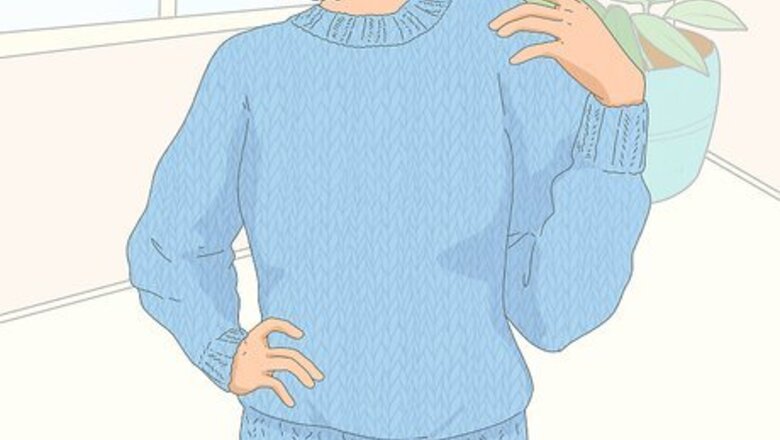
views
Choosing a Project
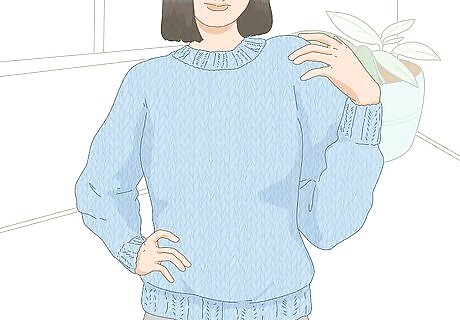
Choose an item that you'll base your pattern on. Decide what your project will be, such as a scarf, sweater, hat, blanket, or any other type of project you can think of. Deciding what your item will be is important so that you can focus on planning a pattern designed just for it. For example, you might look for knitting projects or patterns on Pinterest. If you’re not sure yet what you’d like to knit, look at inspiration in magazines or online.

Select yarn that's right for your project. Pick out a yarn that coincides with your project and makes sense for the item you're designing. For example, if you're knitting a winter hat, you'll want a thicker, warm yarn. If you're making a summer shawl, you'd pick out a lightweight yarn in a color like white, yellow, or bright pink. Yarns come in lots of different textures, from super soft to more rigid. Make sure the type of yarn you use for your project is machine-washable if needed.
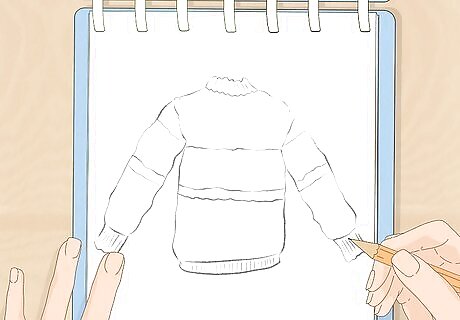
Create a quick sketch to help you envision your idea. Get out a pencil and paper and start drawing your idea, both how it would look in its final form and some ideas for stitches you’d like to use. This will help you brainstorm and create a rough pattern. For example, you might sketch the silhouette of your project first and then fill it in with more specific details and stitching. You might sketch out several different pattern options, too.
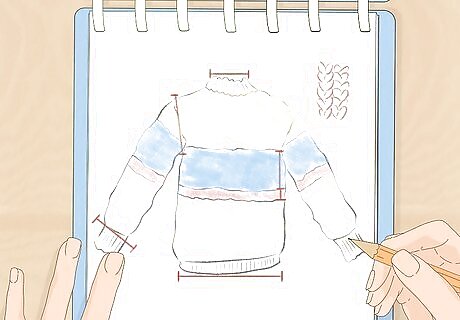
Write down the planned measurements of your project. Decide how many inches or centimeters you’d like your project to be, even if it’s just an estimate. Use a measuring tape to help you decide and jot the dimensions down on a piece of paper to refer to later. This will help you figure out how many rows and stitches you'll need for your project. For example, you might decide how long you’d like a scarf to be or what size shirt to knit.
Making Test Swatches
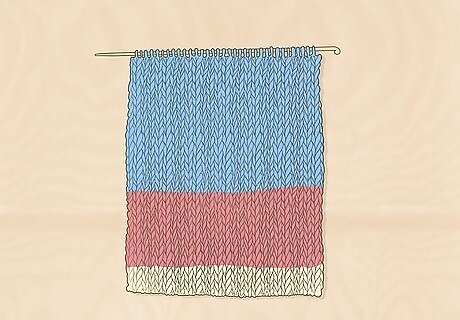
Knit swatches to test out your pattern ideas. Create two swatches: one made of all regular stitches so you get an idea of the sizing, and another that helps you test out your specific pattern. A swatch is a little sample of your project that you can use for measuring and experimentation. Make swatches that are at least 4 in (10 cm) so they’re wide enough to be useful. The swatch will tell you how your yarn works with the specific stitch and knitting needles you’re using, and you can use the swatch to determine how many rows and stitches you’ll need for your project. Keep all of the swatches you make so you can refer to them later if needed. It’s best to repeat your stitch pattern at least twice on the swatch for an accurate test.
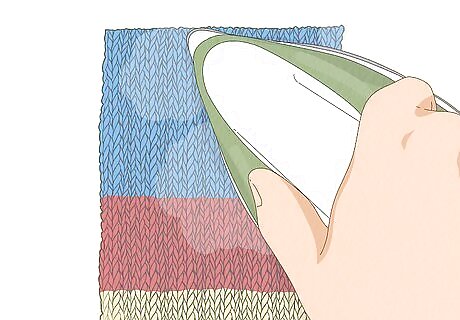
Block your swatches to learn what happens to them in water or steam. Blocking is when you wet, steam, or iron your swatch, depending on what the item will be, so you can test the yarn and see how it reacts. Once your swatches are finished, wash and dry them so you know how your project will turn out once it’s being used. If your yarn ends up shrinking or expanding, you'll know that you need to adjust your pattern to add more stitches or take some away. Treat your swatch just like you’ll treat your final knit item.
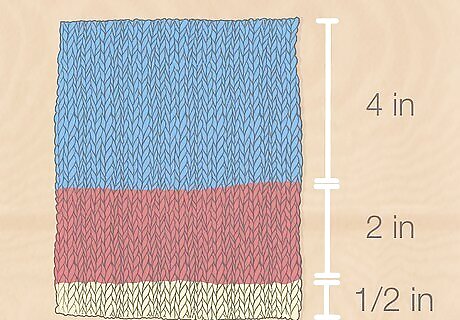
Measure your swatch’s stitches and rows to plan your project. Use your swatch as a gauge for your actual project. For example, use the regularly knit swatch to find out how many stitches are in 4 in (10 cm), and then multiply this by your project’s expected length to find out how many stitches total that you’ll need. If you’re measuring in centimeters, it’s easiest to measure the stitches per 10 cm (3.9 in).
Designing the Pattern
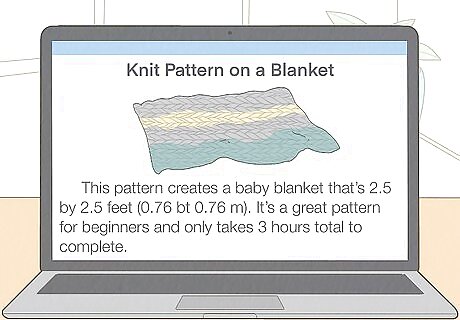
Give a brief description of the project. Write what the pattern will create and give a few more details to help the person using the pattern decide if it's right for them, like what the item can be used for. Tell them how difficult or easy the pattern is and how long it takes to make the item as well. For example, you might write, "This pattern creates a baby blanket that's 2.5 by 2.5 feet (0.76 by 0.76 m). It's a great pattern for beginners and only takes 3 hours total to complete." Add any tips that might be helpful when they're using the pattern too.
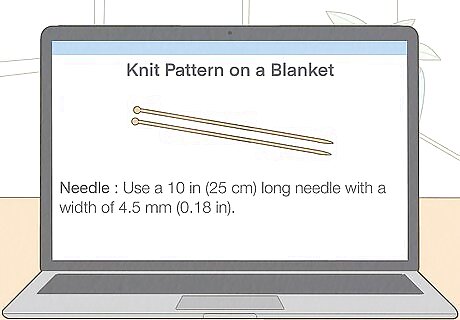
Tell what kind of yarn and needles to use. Be specific when you list the type of needles, putting the exact size that you recommend for the pattern. Write down the type of yarn you used as well, noting the specific brand and how much yarn it'll take to complete the whole project. You could even suggest a few alternative yarns that would work well with the project too. You might say, "Use a 10 in (25 cm) long needle with a width of 4.5 mm (0.18 in).
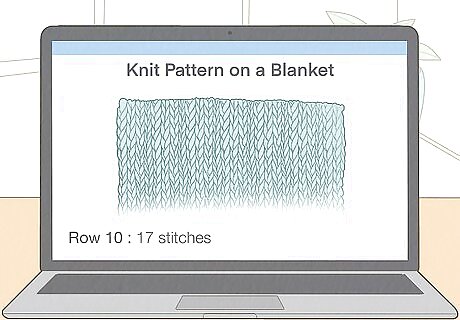
Explain how many stitches to knit per row. Write each row number and how many stitches the row has right next to its number. This is one of the most important parts of the pattern, so make sure it's as accurate as possible. For example, you might write, "Row 10: 17 stitches."
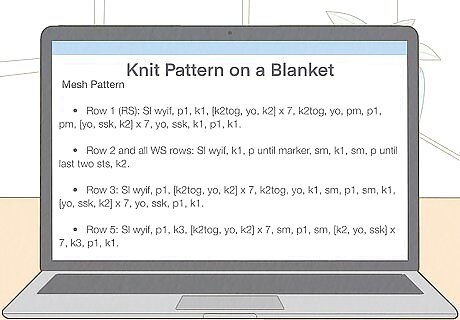
Note what kind of stitch to use for each row. The simplest stitch is the knit stitch, but your pattern might include others like a rib stitch, cable stitch, or purl stitch. Write the specific type of stitch right next to the row number. If the row has several different kinds of stitches, write how many of each stitch is on each row.
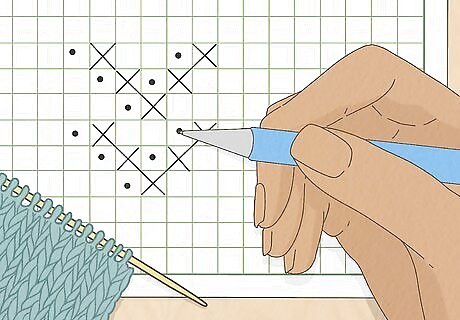
Draw your pattern on graph paper for a visual representation. Pretend like you're knitting using the graph paper and have each box on the paper represent a stitch. Start at the bottom of the paper and mark each box going across in a horizontal line to show the number and type of stitch that's used in the pattern. For example, if a row has 14 stitches total, start at the bottom left of the graph paper and mark 14 boxes across to show the stitches. You might draw an ‘X’ in the box to represent a knit stitch in the pattern, or a dot in the box to represent a crossover stitch. Mark your next row of stitches on top of the first row.
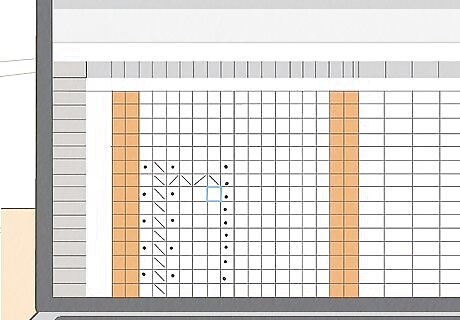
Use an online program to design the pattern quickly and easily. Using an online knitting pattern website is similar to using regular graph paper in that you mark a grid to show your number of stitches and rows. Instead of marking each box with a pencil, fill in the boxes online using a keyboard. There are several different websites you can go to that will create your knitting pattern for you this way. It’s also easy to mimic graph paper in a regular online document to create the pattern yourself. Doing your pattern online makes it easy to change if needed.
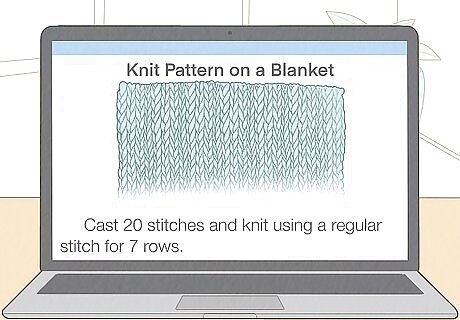
Describe your pattern in words row by row for a detailed approach. If you decide to write out your entire pattern instead of show it in a graph form, be super detailed and explain each stitch that you use as well as how many. Make it clear how the knitter begins and walk them through every step and every row. For instance, you might say, “Cast 20 stitches and knit using a regular stitch for 7 rows.” Look at professional knitting patterns for more examples of this.
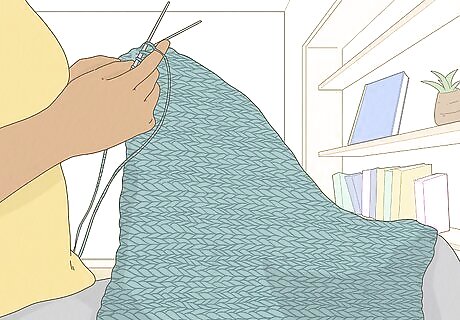
Test the pattern out by knitting it completely. Once you’ve sketched your idea and written out the pattern, it’s time to put your plan into action. Knit the entire piece until it’s finished, taking notes as you go of things you might do differently or things that worked well. Once you’re completely finished, you can critique your piece to see if your pattern was helpful enough. Expect to find things you’d like to change as you’re knitting, and even when you’re done, to make your project even better. Take pictures of the project once you’re finished to include in the pattern.
















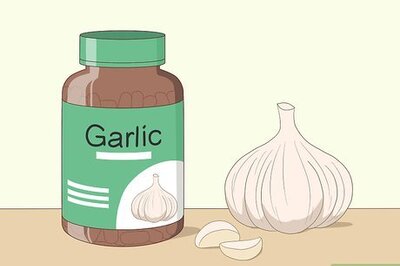

Comments
0 comment